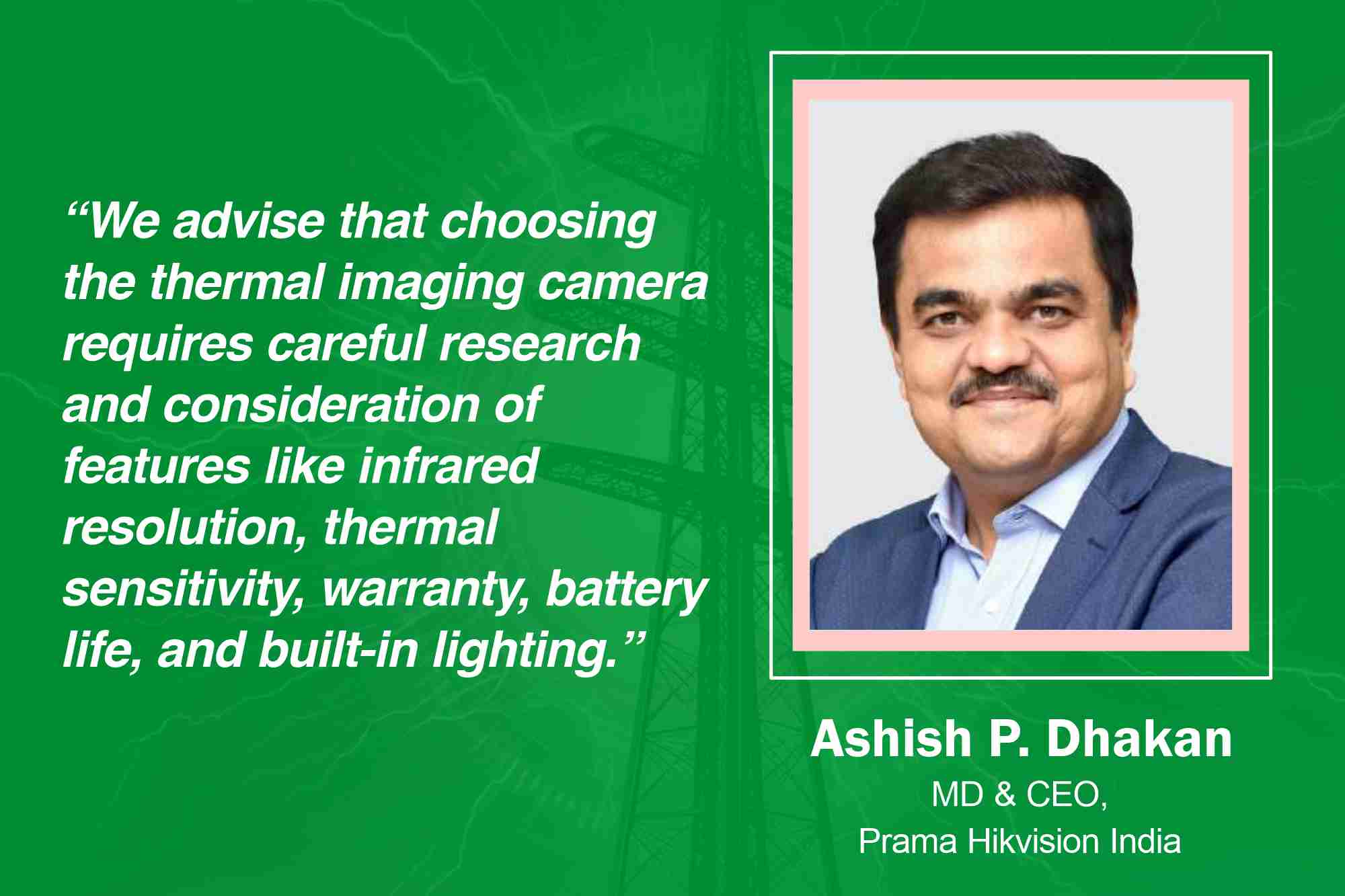Accurate and reliable use of thermal imaging cameras
By EPR Magazine Editorial July 25, 2024 4:30 pm IST
By EPR Magazine Editorial July 25, 2024 4:30 pm IST

Choosing the thermal imaging camera requires careful research and consideration of features like infrared resolution, thermal sensitivity, warranty, battery life and built-in lighting.
Spokesperson:
Ashish P. Dhakan, MD & CEO- Prama Hikvision India
Thermal imaging cameras are versatile tools, but they can also require a significant investment. Understanding the key features helps to define your needs and expectations.
Current and future needs
There are so many applications for thermal imaging that it is important to know how you will use it and why you want to add it to your toolbox. Instead of attempting to meet many needs, focus on meeting the needs of the primary users. Otherwise, choosing a thermal imaging device for general use risks ending up with one that meets no one’s needs and is not used.
Thermal imaging cameras have a wide range of features. Designs can measure temperatures at specific points or present a snapshot of the heat signatures in an area. Some cameras measure objects at a distance or focus on a limited temperature range. Size, portability and even the types of files created vary by device.
Devote time to evaluating your needs and specifying the features that will best meet them. Concrete specifications and details on how the tool will be used can be used to prioritise features and narrow down your purchasing options.
Key features to look for
Some features are more important than others. The most important ones affect an image’s level of detail and determine accuracy, reliability and precision. These six features determine the quality of the measurements taken by a thermal imaging camera:
Infrared resolution
Resolution is usually the first specification people evaluate when selecting a thermal imaging camera, and for good reason—it determines image detail and measurement performance.
Resolution is based on the number of detector elements on the focal plane and is usually expressed as pixel count or with horizontal and vertical resolution such as 160×120. A 160×120 camera has a detector with 160 pixels across, 120 pixels tall, and a pixel count of 19,200 pixels. Another standard resolution is 384×288 (110,592 pixels).
The higher IR resolution improves the detail in the image and the ability to measure targets (even small ones) from further away. The Hikmicro cameras offer pixel resolutions ranging from 96×96 up to 1280×1024.
Visual camera resolution
Many thermal cameras also include a built-in visual camera. A low-resolution optical camera helps add graphic detail to the thermal image with Picture in Picture or Fusion modes.Look for higher-resolution cameras, such as 8 MP, if you plan to include high-quality visual and thermal images in your report. The ease of taking both thermal and visual pictures will save you time in the field and your reporting.
Focus
There are three types of focus — fixed, manual, and auto — each with a specific purpose. Fixed focus reduces cost and complexity, offering less clarity over the working distance. Fixed-focus cameras can be a good choice for professionals who need quick measurements while working close to equipment or when detailed reporting is not required.
On the other hand, manual focus and autofocus provide sharp images over a broader range of distances with noticeable improvements in image quality. The quality and type of lens, combined with the ability to manually or automatically adjust the focus, determines image clarity and measurement precision.
An out-of-focus image blurs background temperatures with the target being measured, which can lead to significant error. This is an important feature that expands the camera’s versatility.
Frame rate
The camera’s frame rate indicates the number of images taken per second. Most products on the market offer a frame rate of 9 Hz or slower. In comparison, HIKMICRO cameras are 25 Hz or faster. Higher frame rates provide smoother video and easier viewing for the operator. This is especially important for measurements of fast-moving objects or for panning across a scene to inspect a larger area.
Warranty
As with any significant equipment investment, the warranty and customer service are important. While the best warranty is the one you never have to use, a generous warranty helps safeguard your purchase. At HIKMICRO, we offer a three-year warranty on the system and ten years on the detector.
Battery life
A feature that often goes unnoticed during buying decisions is battery life. Long battery life comes in handy when you’re in the field or at a job site. You don’t want your thermal imaging camera to die when there’s still work to be done.
Thermal cameras offer either internal batteries or interchangeable (tool style) batteries. For internal batteries, ensure the run time is adequate for a full day of operation. For systems with interchangeable batteries, ensure they include at least two batteries and that the charger can recharge both.
When purchasing a thermal imaging camera, the goal is to get the most desired features for your target price point. Picking the best option takes forethought and research. While features such as laser pointers and built-in lighting may be helpful, they have little impact on the image quality or the camera’s reliability. High IR resolution, decent optical resolution, multiple focus modes, high frame rates and a warranty that shows that the company backs its product are far more important.
We use cookies to personalize your experience. By continuing to visit this website you agree to our Terms & Conditions, Privacy Policy and Cookie Policy.